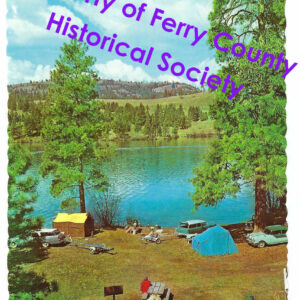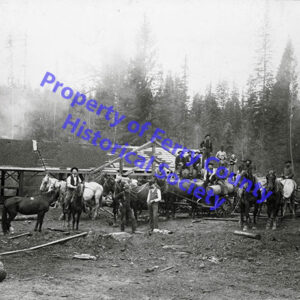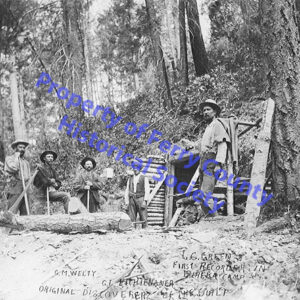L.H. Mason building progress
Work on the L.H. Mason building, our future museum, is still in the demolition stage. After over a century of additions and modifications there was a lot of material to remove before we could get to the basic structure of the building to see what needed to be repaired. One 40-cubic-yard dumpster of material has been removed and a 20-yard dumpster is being filled. Useable lumber is being saved for reuse.
Outside demolition included removal of the sidewalk that was directing runoff against the north side of the building. In order to access the sidewalk the gable roof over the northeast corner was removed by local contractor O.B. Roberson. The “mezzanine” addition inside proved to be stable, self-supporting and not tied into the brick walls. It can be kept and used as storage space. Restrooms will be installed under it. The wall that separated the front and back rooms has been removed, as has most of the insulation that covered the front room walls. The next step is removal of the drop ceiling.
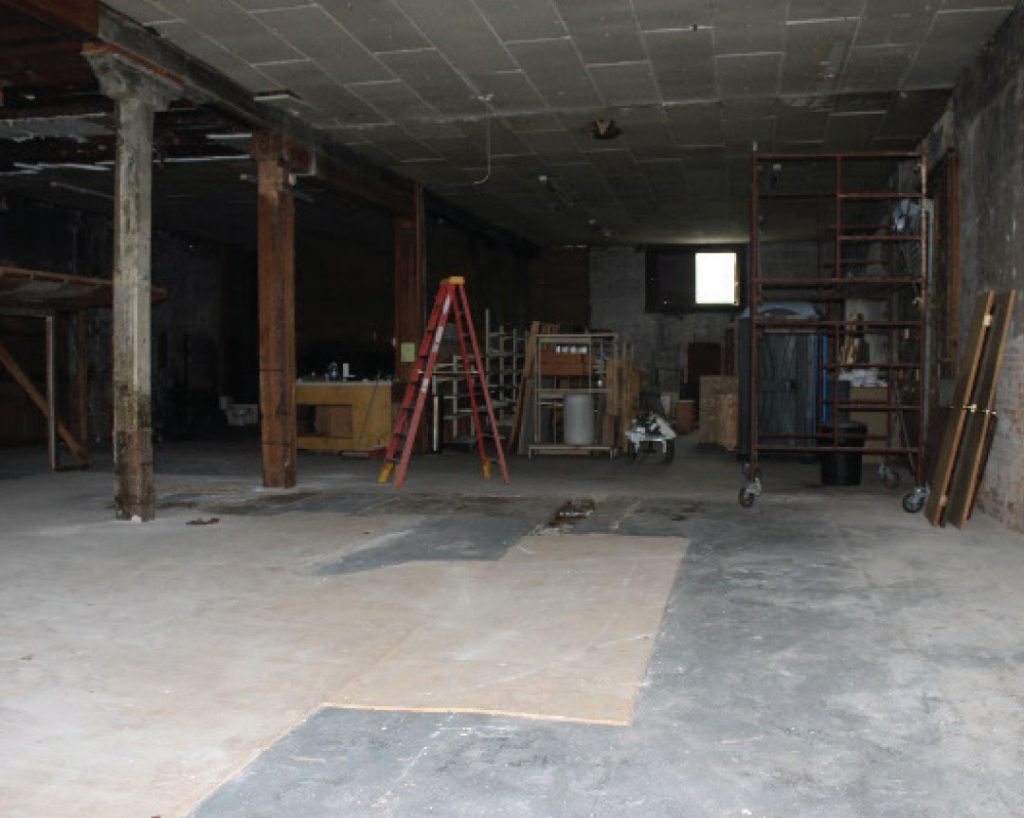
We have bricks!
The Ferry County Historical Society has purchased three pallets of bricks from the Malo Trading Post. These bricks are from the old Curlew School and our consulting brick expert, Mark Liebman, has tested a sample and finds them compatible with the bricks in the L.H. Mason building. There are slightly over 400 bricks per pallet, so between the bricks people have donated and the purchased bricks we should have enough for the necessary repairs.
Thanks!
Thanks and a tip of the hat to all the volunteers who have helped in getting the L.H. Mason building ready for its transformation into a museum: The demolition crew led by V.P. Ray Bilderback has been busy. Its core members are Jennifer Aspenwell, Clifford Cahoon, Judy Roberson and Michael Sternberg; occasional members are Ben Heizer, Eric Hulse, Madilane Perry, Luke and Twinflower Wilkie. Thanks also to the people who have provided their professional services free: electrician Richard Wilkie, who made sure we didn’t electrocute ourselves with the building’s many generations of rather eccentric wiring; Steve Hines, who loaded the bricks he sold us for transport; John Stotts, who transported the bricks from Malo to Republic; Tony Betschart of Wild West Farm and Garden, who unloaded the bricks at the L.H. Mason building and moved them again when requested and Architect Ernie Robeson who made an additional visit to Republic in August. Several local people also contributed old bricks: John D. Anderson, Jean Delaney, Gary Johnson, Mary Masingale, Judy Roberson and Dick Slagle.
A large “thank you” to Emily Burt of the Republic Brewing Company for handling the credit union account for L.H. Mason building development. The FCHS couldn’t function without the generous help of volunteers.
Ferry County Fair booth
Once again the FCHS and Curlew’s Kettle River History Club and Husky Car & Truck Museum teamed up to present a look at Ferry County’s history at the Ferry County Fair. The fair theme this year was “Stirrup Some Fun.” Our booth, papered with large photographs of what Ferry County residents did for fun in the early days, won a blue ribbon. The booth was staffed by Jennifer Aspenwell, Jimmie Beedle, Deborah Cooper, Julie Helmick, Donna Lembcke, Lynnie Lindgren and Madilane Perry.
The enlarged photographs are now on display in the front window of the L.H. Mason building but will soon be replaced by photos dealing with Ranald MacDonald.
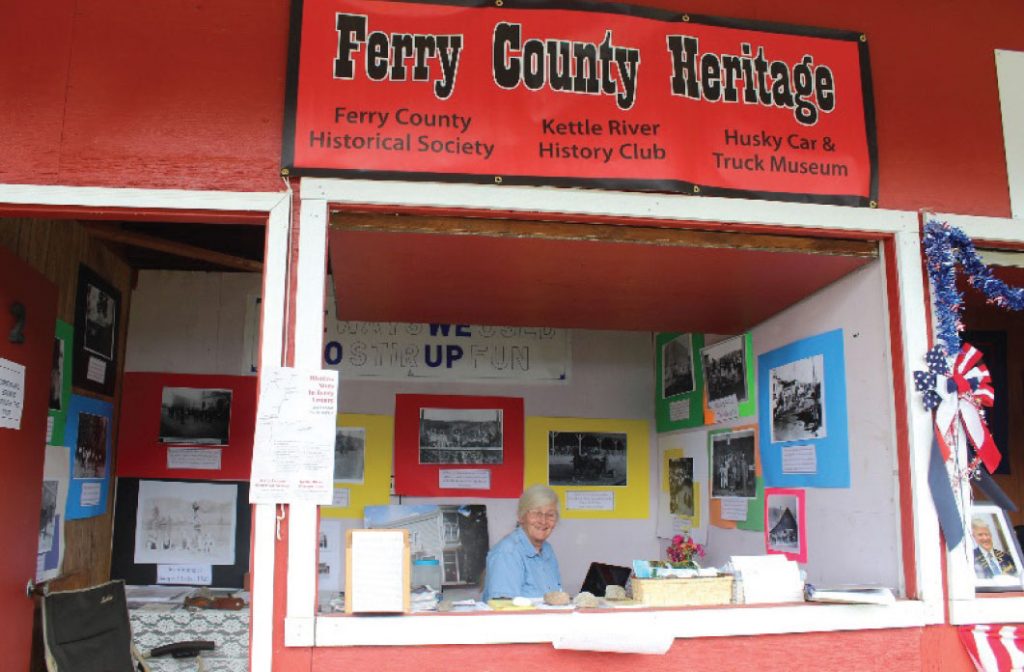
by the shutter. Photo by Mary Masingale.
Japanese visitors
Rishiri Island was the first place where Ranald MacDonald, Japan’s first English teacher, went ashore in Japan. The people of Rishiri remember him and because of that we have had annual visitors from Rishiri High School for the past six years. This year we will have two students and an instructor arriving Oct. 23rd to visit Ranald MacDonald’s grave at Toroda. The FCHS usually provides bags of small souvenirs for our Japanese visitors. If you or your business have any small, locally specific items
such as key chains or bookmarks that you’d like to contribute to the bags, please call Madilane Perry.
Donation of tools
Mel Shunn donated a collection of old tools to the FCHS collection. It includes several saws and saw blades, a hay scale and a branding iron used by both Mel and his uncle Harry Shunn.
Where do we go from here?
Now that we have a building that will be all our own and actually has space enough to house our whole collection, what are we going to do with it? At the moment the society’s only direction for development is the mission statement shown on the opposite side of this page. It states what our purpose is but gives no indication how we are going to carry out our mission. We need ideas about funding sources for the maintenance of the building, for keeping the water and electricity flowing, for staffing, for exhibit design and for grant sources. We need answers to questions like “Where do we want to be in two years? In five years? In ten?”
We need clearly stated goals to work toward. To establish them we need input from the membership and the community. At the general membership meeting in March the board will be holding a brainstorming session to provide ideas for a development plan. If you have ideas don’t wait for the March meeting! Contact President Madilane Perry or come to a regular board meeting on the fourth Tuesday of the month at 5:30 p.m. at our present museum across from the park in Republic. Board meetings are open to all members.

